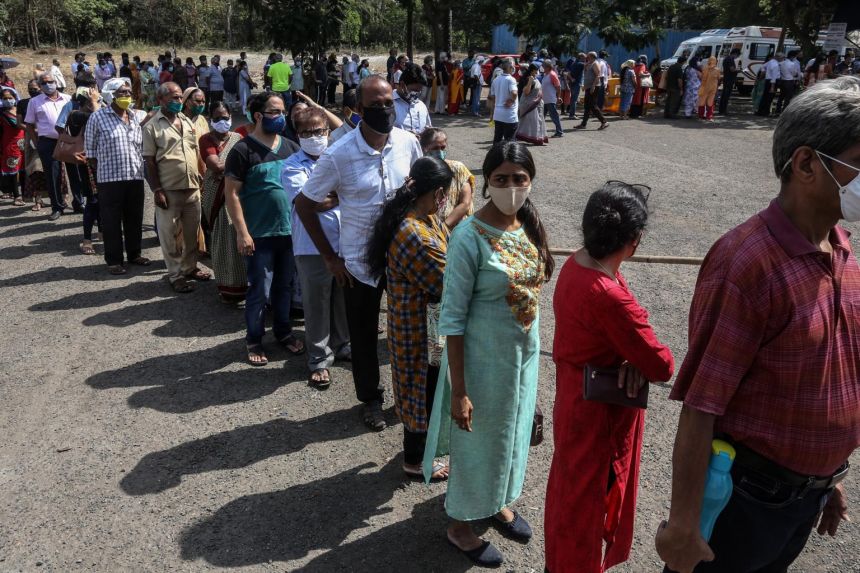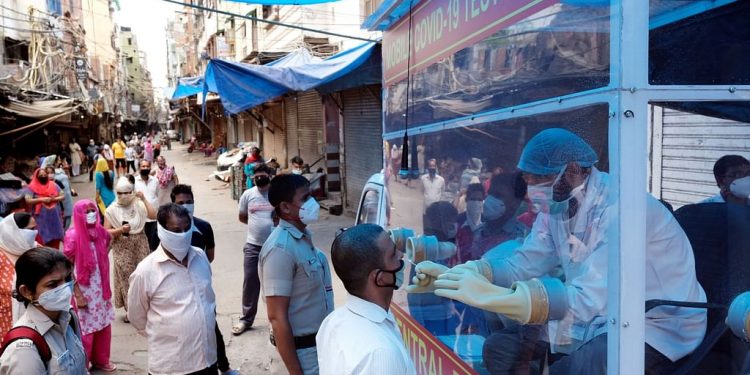India posted the world’s biggest one-day jump in coronavirus cases, with infections surging beyond 300,000 Thursday as the country’s deadlier second wave shows no signs of abating.

The South Asian nation, which has the second-largest outbreak globally, reported 314,835 new infections, pushing the total to almost 16 million cases. The U.S., the worst-hit country, saw a peak of 314,312 cases on Dec. 21 and has only reported more than 300,000 infections on two days since the onset of the pandemic. Cases in America are now on a downward trend helped in part by aggressive vaccinations.
The deteriorating situation in India shows how the pandemic crisis has shifted firmly to the developing world, where variants are threatening containment measures and there are a lack of vaccines after supplies were taken up by richer nations.
Despite being home to the world’s biggest vaccine manufacturer, India has struggled to provide enough shots for its population of 1.3 billion. Lower vigilance around masks and social distancing has also contributed to the resurgence, with large festivals and elections allowed to take place with few precautions.
This wave is also more lethal for India, which saw fewer fatalities than other developing nations such as Brazil during the first wave, puzzling experts. Covid-related deaths in the country have jumped to 184,657. India has administered more than 132 million vaccine doses, according to data from its health ministry. That’s enough to cover only about 4.8% of its population, according to Bloomberg’s vaccine tracker.
The outbreak threatens to derail the Indian economy that had just begun to recover after a nationwide lockdown last year pushed it into a historic recession. A new virus variant with a double mutation has also been detected locally, and concerns are growing that it’s driving the fierce new wave that is overwhelming India’s hospitals and crematoriums.
New Delhi’s largest hospital chain operator rushed to court Wednesday night to seek critical oxygen supply after 1,400 Covid-19 patients across the Indian capital were put at risk due to “dangerously low” supply levels.
The Delhi High Court’s two-judge panel headed by Justic Vipin Sanghi expressed “shock and dismay” over the government’s neglect and directed Prime Minister Narendra Modi’s administration to “beg, borrow, steal” but ensure adequate oxygen supply for hospitals.
“This is just bad planning. Why didn’t we foresee this? This is not rocket science,” Justice Sanghi said during the hearing.
The late-night courtroom drama, with the state and federal government lawyers bickering over oxygen supplies to the national capital, which has among the best health-care infrastructure in the country, is a grim indicator of a worse situation in the hinterlands. The nation’s social media has turned into a helpline with desperate calls for help to secure medicines, hospital beds, and oxygen cylinders.
The ferocity of the second wave is also resonating with investors and analysts.Indian stocks and the rupee have turned Asia’s worst performers this month as sentiment soured, while credit default swaps also surged. Care Ratings Ltd. on Wednesday lowered India’s gross domestic product growth forecast for the current fiscal year to 10.2%, from as much as 11.2% last month. This is its second downward revision in less than a month. [Bloomberg]















